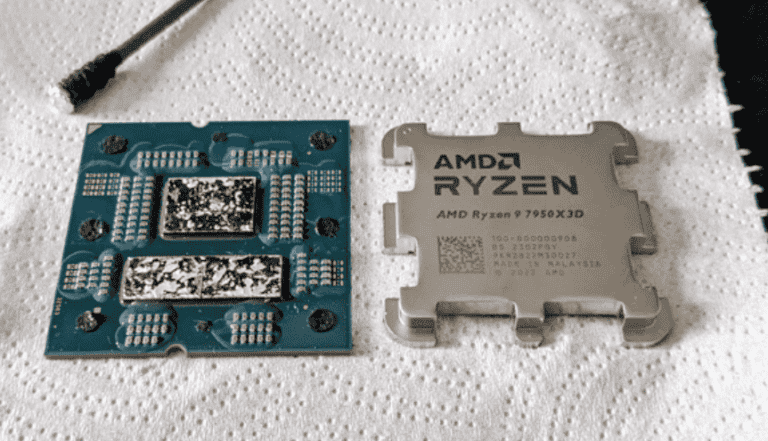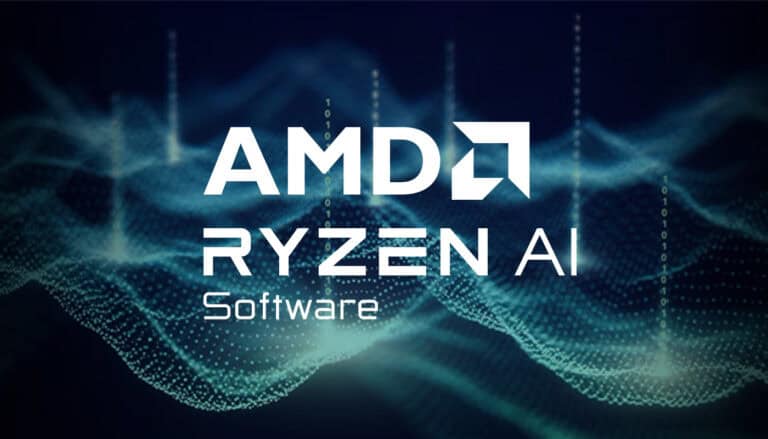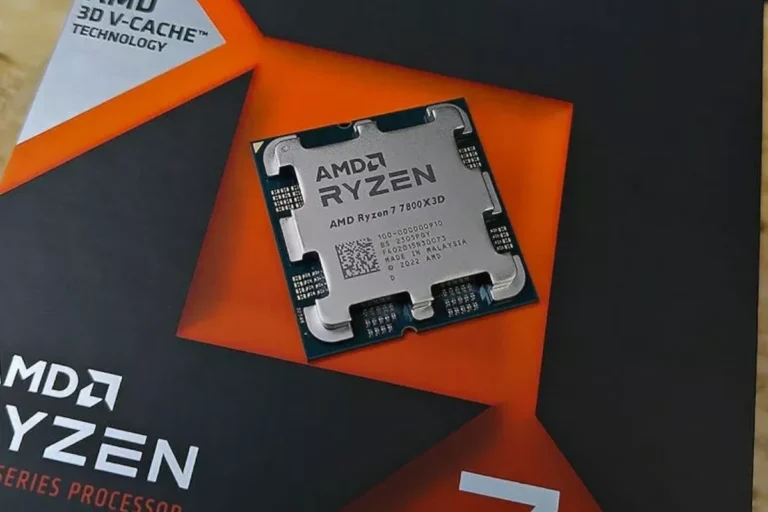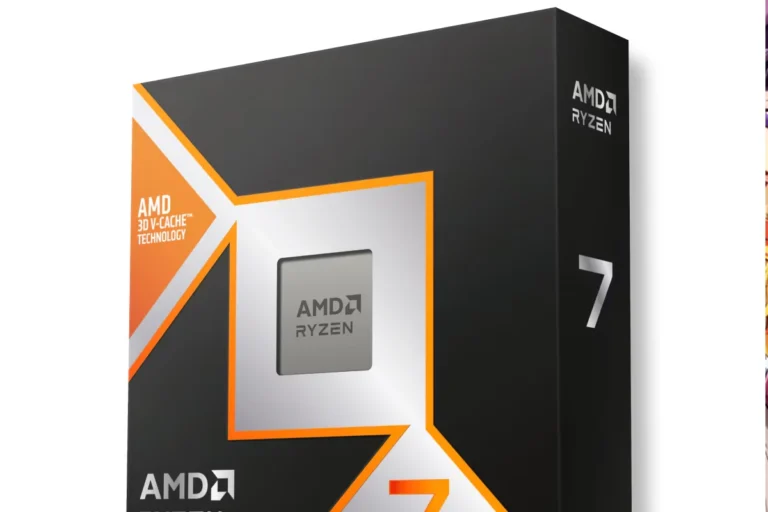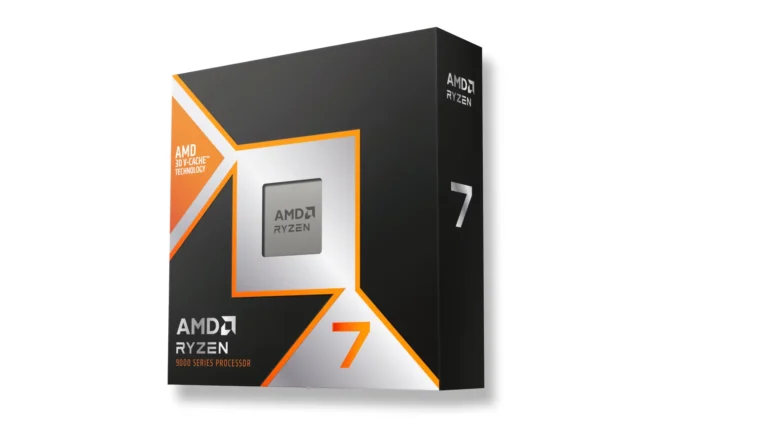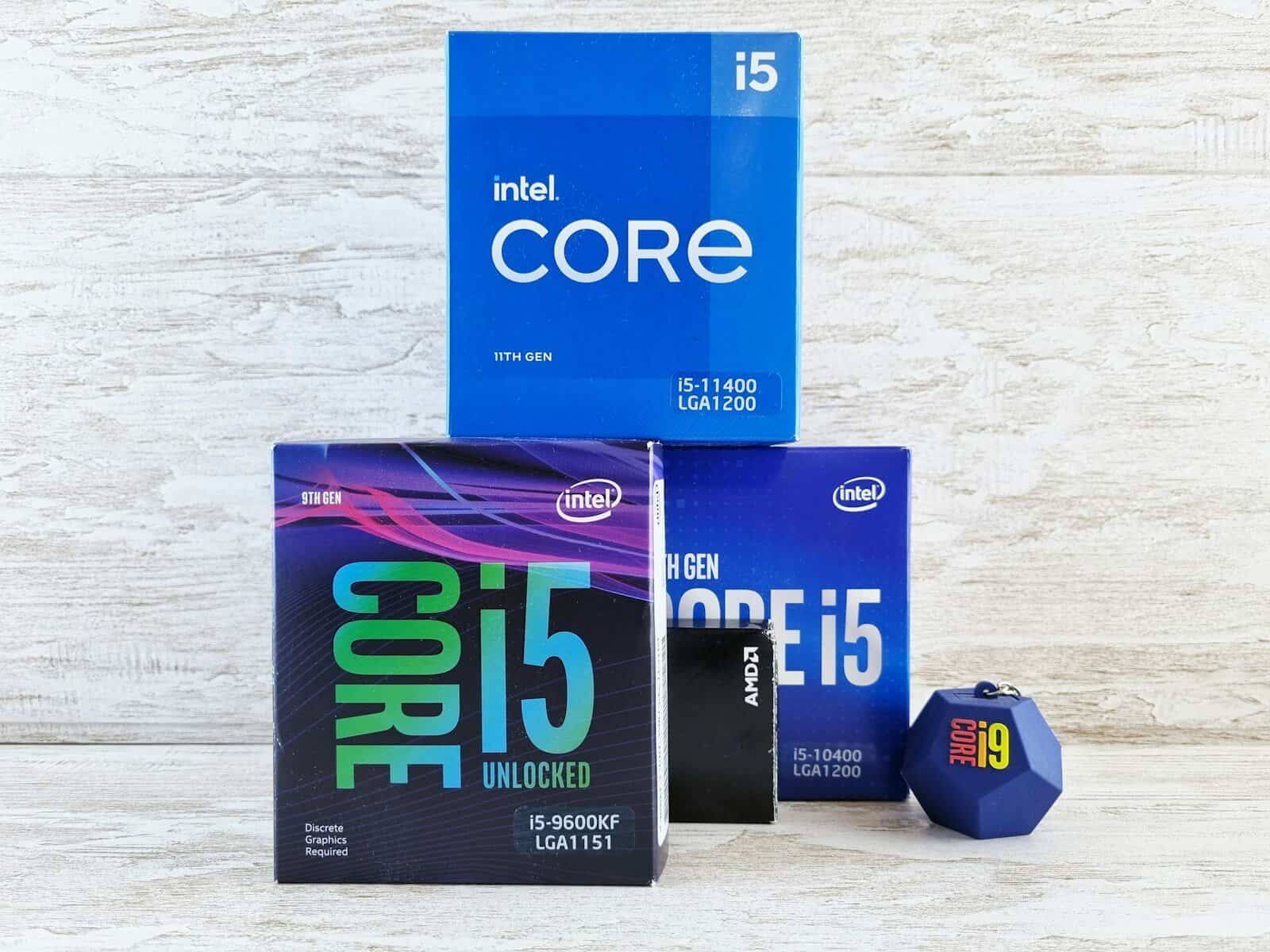
Intel’s new CEO, Lip-Bu Tan, is moving aggressively to reshape the company’s future—and that starts with a complete overhaul of its manufacturing arm, Intel Foundry. Since stepping into the role in March 2025, Tan has wasted no time implementing sweeping reforms aimed at restoring Intel’s credibility in a semiconductor market increasingly dominated by rivals like TSMC, Samsung, and Nvidia.
15–20% Factory Workforce Cut Signals Massive Shift
One of Tan’s most immediate—and controversial—moves is a 15–20% reduction in Intel’s global factory workforce, affecting roughly 10,000 employees. Scheduled to begin in July 2025, this restructuring is part of a larger initiative to eliminate bureaucratic bottlenecks, accelerate decision-making, and reposition Intel’s fabs as more agile, responsive business units.
This is not just about trimming fat. Intel Foundry, which lost a staggering $13 billion in 2024, has been bleeding cash due to underutilized capacity, manufacturing delays, and poor customer acquisition compared to foundry leaders like TSMC. Tan’s bet is that by simplifying operations and slashing overhead, Intel can become competitive again in the foundry space—a market expected to exceed $200 billion globally by 2030.
Foundry Reimagined as Standalone Business
Tan is also exploring a dramatic structural change: spinning off or financially separating Intel Foundry from the rest of the company. This move would not only clarify governance but also help resolve the internal conflict of Intel designing chips that compete with the same clients its foundries want to attract—companies like Nvidia, AMD, Qualcomm, and even Microsoft.
Positioning Intel Foundry as a customer-first service provider is central to this transformation. The company is actively pitching its advanced packaging capabilities and new node roadmap (including Intel 18A) to potential clients. Federal CHIPS Act funding is also being leveraged to help subsidize this realignment.
Flattening the Org Chart to Speed Innovation
Intel’s internal culture has long been criticized as bloated and slow to react. Tan is addressing this head-on by flattening layers of middle management, which he believes have stifled innovation and delayed execution. This cultural reset echoes moves made by other turnaround CEOs—like Satya Nadella at Microsoft—who simplified management hierarchies to empower engineers and product teams.
Rebuilding Trust in AI & High-Performance Computing
Intel has also lagged behind in the AI chip race, especially as Nvidia and AMD dominate the GPU and AI accelerator markets. Under Tan, Intel is reorganizing its AI division to better align R&D with real-world demand—particularly in data centers, edge computing, and enterprise inference.
While the Gaudi series of AI chips has shown promise, Intel plans to take a more integrated approach—embedding AI capabilities across its entire product stack, from CPUs to networking to software toolkits. This strategic shift is essential as AI workloads become central to customer demand and data infrastructure investments.
Financial Targets and Outlook
Intel reported an $821 million loss in Q1 2025, and Tan has been blunt: restoring profitability requires hard choices. The company now plans to cut operating expenses from $18.5 billion in 2024 to $17 billion in 2025 and $16 billion in 2026. The goal for Intel Foundry is to break even by 2027.
Tan’s disciplined capital allocation strategy includes reduced spending on underperforming segments and increased investment in advanced process nodes and packaging—areas where Intel has a technological edge if it can execute effectively.
The Bottom Line
Lip-Bu Tan’s turnaround plan for Intel is ambitious, sweeping, and potentially transformative. If successful, Intel could re-emerge not just as a chip designer, but as a premier foundry alternative to TSMC—crucial for U.S. tech independence. But with layoffs, restructuring, and financial pressure mounting, execution will be everything. Investors and industry partners will be watching closely in the months ahead.
Key Takeaways
- Intel’s new CEO is prioritizing foundry services improvement to regain manufacturing leadership in the semiconductor industry.
- Workforce restructuring will streamline operations by reducing management layers and reallocating resources to strategic areas.
- The AI strategy overhaul aims to position Intel competitively against rivals in the rapidly growing artificial intelligence market.
Intel’s Strategic Direction Under Lip-Bu Tan
Intel’s incoming CEO Lip-Bu Tan is planning a major transformation of the company’s operations with a focus on manufacturing improvements and AI development. His strategy aims to address long-standing inefficiencies while positioning Intel to compete in rapidly evolving semiconductor markets.
Lip-Bu Tan’s Background and Vision
Lip-Bu Tan brings extensive industry experience to Intel, having previously served as CEO of Cadence Design Systems and founder of venture capital firm Walden International. His expertise in chip design and manufacturing positions him well to tackle Intel’s challenges.
Tan’s vision centers on restructuring Intel’s AI operations and streamlining the company’s management structure. He plans to significantly reduce middle management to create a more agile organization capable of faster decision-making.
His approach emphasizes the foundry business—a key area where Intel has struggled to gain traction against competitors. You’ll likely see Intel double down on foundry services under Tan’s leadership, as he views this as crucial to the company’s future.
Potential Impact on Intel’s Business Model
The planned overhaul could fundamentally alter Intel’s position in the semiconductor industry. By addressing manufacturing inefficiencies, you might see Intel regain some of its competitive edge against rivals like TSMC and Samsung.
Tan’s strategy includes significant changes to chip manufacturing methods, potentially modernizing processes that have fallen behind industry standards. This could help Intel close the technology gap with competitors.
The restructuring may involve difficult decisions, including potential workforce reductions. Some reports suggest Tan might implement substantial layoffs targeting middle management to streamline operations and reduce costs.
For investors and customers, these changes signal Intel’s determination to address long-standing issues. You can expect a leaner, more focused Intel emerging from this transition, with greater emphasis on foundry services and AI capabilities.
Manufacturing Operations Overhaul
Intel’s new CEO Lip-Bu Tan is planning significant changes to the company’s manufacturing operations to regain competitive edge. The overhaul focuses on restructuring the foundry business, upgrading facilities, and implementing AI technologies to improve efficiency.
Upcoming Changes to Intel Foundry Services
Intel Foundry Services (IFS) is set for a major transformation under Tan’s leadership. The new CEO is considering significant changes to chip manufacturing methods to make the foundry business more competitive against rivals like TSMC.
You’ll notice shifts in how Intel operates its foundry services, with a stronger focus on attracting external customers. The plan includes:
- Enhanced service offerings for third-party chip designers
- Streamlined manufacturing processes to reduce costs
- Specialized chip production capabilities for high-performance computing
The restructuring aims to address inefficiencies within Intel’s management structure that have hindered the foundry’s growth. Tan’s expertise in semiconductor supply chains positions him well to revitalize this critical business segment.
Investments and Upgrades in Manufacturing Facilities
Intel is doubling down on its manufacturing presence with massive investments in new facilities. The company continues expanding its operations in Arizona and Ohio, creating advanced semiconductor fabrication plants.
These investments include:
- State-of-the-art equipment installation for producing chips on more advanced nodes
- Modernization of existing facilities to improve yield rates
- Implementation of automated quality control systems
You’ll benefit from these upgrades as they aim to solve production delays that have plagued recent chip releases. The manufacturing revival plan includes workforce restructuring to optimize operations.
These facilities will support Intel’s ambition to reclaim leadership in semiconductor manufacturing technology after falling behind competitors in recent years.
The Role of Artificial Intelligence in Manufacturing
AI technologies are becoming central to Intel’s manufacturing strategy. Tan plans to overhaul the company’s AI strategy while integrating these advancements into production processes.
You can expect to see AI implementation across several manufacturing areas:
Predictive maintenance:
- AI systems detecting equipment issues before failures occur
- Reducing costly downtime in chip fabrication lines
Process optimization:
- Machine learning algorithms fine-tuning manufacturing parameters
- Improving yield rates for complex chip designs
Quality control:
- AI-powered visual inspection systems identifying defects
- Reducing waste and improving overall chip quality
This AI integration represents a significant shift in how Intel approaches manufacturing. The technology will help address inefficiencies that have contributed to past production challenges while positioning the company for future competitiveness in the semiconductor industry.
Partnerships and Collaborations
Intel’s new CEO Lip-Bu Tan is leveraging his extensive industry connections to forge critical partnerships as part of the company’s manufacturing overhaul. These strategic relationships aim to strengthen Intel’s position in both the foundry business and AI chip production.
Strategic Alliances with Companies like Cadence and Microsoft
Lip-Bu Tan’s background as Chairman of Cadence Design Systems is proving valuable for Intel’s new direction. This connection provides Intel with stronger ties to essential chip design tools that foundry customers require.
Microsoft has emerged as a key ally in Intel’s manufacturing transformation. You’ll see this partnership focusing on custom chip development for AI applications, giving Intel a foothold in the competitive AI hardware market where Nvidia currently dominates.
What makes these alliances particularly strategic is how they position Intel at multiple points in the semiconductor value chain:
- Design tool access through Cadence relationship
- Cloud computing expertise via Microsoft collaboration
- AI acceleration capabilities shared across partnerships
Intel’s Interactions with Foundry Customers
Intel Foundry Services is receiving renewed focus under Tan’s leadership. You can expect a more customer-centric approach as Intel restructures its foundry operations to better compete with established players like TSMC.
Amazon has emerged as a potential major foundry customer, with talks progressing for custom chip manufacturing. This relationship could significantly boost Intel’s credibility as a contract manufacturer.
The company is addressing previous challenges in customer relationships by:
- Improving communication channels with potential clients
- Creating more flexible manufacturing options
- Developing specialized processes for different customer needs
Tan’s approach emphasizes efficiency improvements that directly benefit customers. His restructuring aims to remove management layers that previously slowed decision-making in customer negotiations and technical support.
Competitive Landscape and Market Position
Intel faces stiff competition in a rapidly evolving semiconductor industry. The company’s planned manufacturing overhaul under Lip-Bu Tan addresses critical weaknesses that have caused Intel to fall behind key rivals in recent years.
Comparison with Major Competitors like TSMC and AMD
Intel has struggled to keep pace with Taiwan’s TSMC, which has surged ahead in manufacturing technology. While Intel faced delays with its 7nm and 10nm processes, TSMC successfully deployed more advanced nodes for clients like AMD and Apple. This manufacturing gap allowed AMD to gain significant ground in both consumer and data center markets.
TSMC’s manufacturing leadership has become the industry benchmark, with their superior process nodes delivering better performance and efficiency. Their foundry model has proven extremely successful, contrasting with Intel’s historically integrated approach.
AMD has capitalized on Intel’s manufacturing struggles, dramatically increasing its market share in crucial segments. Their partnership with TSMC has enabled them to produce chips that often outperform Intel’s offerings.
How the Overhaul Aims to Strengthen Intel’s Market Share
Tan’s strategy focuses on improving Intel Foundry‘s performance to recapture manufacturing excellence. You’ll see Intel pursuing a more flexible approach to chip production under the new leadership.
The plan includes restructuring AI operations to better compete in the booming AI chip market dominated by Nvidia and increasingly contested by AMD.
Intel aims to address inefficiencies in its management structure to speed decision-making and innovation cycles. This could help you see faster product improvements and more competitive offerings in the market.
By making chips for other companies like Microsoft, Intel is diversifying its business model to compete more directly with TSMC’s foundry services. This strategy could create new revenue streams while maximizing the utilization of manufacturing capacity.
Challenges and Opportunities for Intel
Intel faces significant hurdles as it attempts to reclaim its manufacturing leadership, but several promising opportunities also lie ahead. The company’s new direction under Lip-Bu Tan’s leadership will require addressing structural issues while capitalizing on emerging technologies.
Addressing the Semiconductor Industry’s Middle Management
Intel’s bloated middle management structure has become a significant obstacle to innovation and efficient decision-making. You’ll notice that under Tan’s leadership, Intel is planning a restructuring to address these inefficiencies. The company’s layers of management have slowed product development and manufacturing processes.
Industry analysts point to successful competitors like TSMC who maintain flatter organizational structures. By streamlining decision-making channels, Intel aims to:
- Reduce time-to-market for new chip designs
- Increase accountability at leadership levels
- Improve communication between engineering and production teams
This management overhaul represents one of Tan’s most critical challenges. His experience at Cadence Design Systems could prove valuable as he works to create a more nimble organization capable of competing with industry leaders.
Impact of Geopolitical Tensions on Manufacturing
Geopolitical factors have dramatically reshaped the semiconductor landscape, creating both challenges and opportunities for Intel’s manufacturing revival. The US-China tech rivalry and global supply chain disruptions have pushed governments to subsidize domestic chip production.
You can see how Intel stands to benefit from the CHIPS Act, which provides substantial funding for American semiconductor manufacturing. This support comes at a crucial time as Intel develops its foundry services.
However, these same tensions create complications:
- Restricted access to certain international markets
- Complex compliance requirements for technology exports
- Increased competition from government-backed chip manufacturers globally
Tan’s international experience and relationships may help Intel navigate these geopolitical waters while taking advantage of government incentives to rebuild manufacturing capabilities.
Exploring AI Foundation Models
AI represents both Intel’s greatest opportunity and most pressing competitive challenge. The company must catch up to rivals like NVIDIA in the AI chip market while developing its own foundation models.
Tan is focusing significantly on AI chip production, recognizing it as essential to Intel’s future growth. You’ll see Intel making strategic investments in:
AI Hardware Development:
- Specialized processors for training large language models
- Energy-efficient chips for AI inference workloads
- Custom solutions for enterprise AI applications
The challenge lies in balancing traditional CPU business needs with the rapid innovation required in AI. Analysts suggest Tan is considering partnerships and acquisitions to accelerate Intel’s AI capabilities.
Industry experts believe Intel must define its AI niche rather than competing directly with NVIDIA on all fronts. The company’s manufacturing expertise could allow it to create unique AI hardware solutions that integrate with its broader chip ecosystem.
Human Resources and Corporate Changes
Lip-Bu Tan’s vision for Intel extends beyond technology into reshaping the company’s workforce and internal structure, with significant changes expected in management layers and corporate culture.
Workforce Evolution and Potential Layoffs
Intel may face substantial workforce changes as Tan implements his efficiency-focused strategy. The new CEO views the current organization as having a slow-moving and bloated middle management, suggesting targeted staff reductions are likely.
You should expect restructuring to primarily affect administrative positions rather than technical roles. Tan’s approach reflects his background as a venture capitalist who values lean operations and quick decision-making processes.
Industry analysts predict these workforce changes could result in:
- 10-15% reduction in middle management positions
- Consolidation of overlapping departments
- New hiring focused on AI and advanced manufacturing expertise
The timing of these changes remains uncertain, but initial announcements may come within Tan’s first 100 days as CEO.
Corporate Culture and Executive Team Developments
Tan aims to transform Intel’s corporate culture to emphasize efficiency, innovation, and competitiveness. His leadership style differs significantly from predecessors, with a focus on operational discipline and clear accountability.
You’ll notice changes in how the executive team operates under Tan’s guidance. He’s likely to bring in trusted leaders from his professional network while evaluating current Intel executives based on performance and alignment with his vision.
Key cultural shifts include:
- Faster decision-making processes
- Increased autonomy for technical teams
- Performance-based advancement rather than tenure
Executive compensation will likely be more tightly linked to specific performance metrics, particularly those related to manufacturing efficiency and AI development progress.
Intel’s Financial Outlook
Intel’s financial future hinges on the success of Lip-Bu Tan’s manufacturing overhaul plans, with significant implications for investors and the company’s competitive position in the semiconductor industry.
Projected Financial Performance Post-Overhaul
Intel’s financial performance is expected to face short-term challenges as the company implements its manufacturing restructuring. You’ll likely see increased capital expenditures in the coming quarters as Tan invests in modernizing Intel’s fabrication facilities. The company’s focus on doubling down on its foundry business should create new revenue streams by 2026-2027.
Cost-cutting measures, particularly the planned reduction in middle management, may improve margins by an estimated 2-3% within 18 months. This streamlining could save Intel approximately $2-3 billion annually.
The manufacturing overhaul might temporarily impact Intel’s cash reserves, but analysts project a return to strong free cash flow by late 2026 if the foundry strategy succeeds in attracting major clients.
Analyst Predictions and Wall Street’s Perspective
Wall Street has shown cautious optimism about Tan’s plans, with several analysts upgrading INTC stock following his announcement. You’ll notice that many financial experts cite Tan’s successful track record at Cadence Design Systems as reason for confidence.
Most analysts predict:
- 2025: Continued financial pressure during transition
- 2026: Early signs of manufacturing improvement
- 2027: Potential return to industry-competitive margins
Several investment banks have raised their price targets for Intel, though most maintain “hold” ratings while waiting for concrete progress on manufacturing improvements. The consensus EPS forecast for 2026 stands at $1.85-2.10, representing significant growth if Tan’s strategies succeed.
Shareholder Value Considerations and INTC Stock
INTC stock has experienced volatility since Tan’s announcement, reflecting both excitement about potential turnaround and concerns about execution risks. You can expect continued stock price sensitivity to manufacturing milestone announcements over the next 12-18 months.
Dividend payments appear secure for now, though increases may be limited as capital is directed toward manufacturing investments. Tan has emphasized that keeping control of factories remains core to Intel’s strategy, despite some activist investors pushing for greater outsourcing.
The potential upside for shareholders could be substantial if Intel successfully transforms into a competitive contract manufacturer while maintaining its design capabilities. Many analysts suggest that patient investors could see 30-40% returns within 3 years if execution meets expectations.
Legislation and Policy
Intel’s manufacturing overhaul under CEO Lip-Bu Tan will be significantly influenced by government policies and financial support programs designed to strengthen domestic semiconductor production.
Impact of the CHIPS Act on Intel’s Manufacturing
The CHIPS and Science Act provides Intel with unprecedented opportunities for expanding its manufacturing capabilities. With $52.7 billion allocated for semiconductor research and production, this legislation directly supports Tan’s manufacturing strategy. You’ll notice that Intel has already secured approximately $8.5 billion in direct funding and up to $11 billion in loans under this program for projects in Arizona, Ohio, New Mexico, and Oregon.
Tan’s manufacturing overhaul plans align strategically with CHIPS Act objectives, particularly regarding domestic production expansion and supply chain security. The legislation’s requirements for recipients to limit advanced chip manufacturing in China for 10 years also shapes Intel’s global manufacturing footprint decisions.
These policy incentives have become central to Tan’s decision-making about which facilities to modernize and which production lines to prioritize.
Government Relations and Subsidies
Intel’s relationship with government entities has evolved into a critical strategic asset under Tan’s leadership. The company has strengthened its government relations team, recognizing that public funding will significantly impact manufacturing competitiveness.
Beyond the CHIPS Act, Intel is actively pursuing:
- State-level incentives in manufacturing hub locations
- Tax benefits for R&D investments
- Workforce development grants for semiconductor training
You should understand that Tan’s approach differs from previous leadership by treating government relations as integral to manufacturing strategy rather than as a separate function. His restructuring includes dedicated teams to ensure manufacturing plans align with policy requirements.
Intel’s ability to secure subsidies in multiple regions will determine how quickly Tan can implement his manufacturing overhaul and whether Intel can close the technology gap with competitors who have also received government support.
Market Trust and Credibility
Intel’s new direction under Lip-Bu Tan focuses heavily on rebuilding relationships with key stakeholders while demonstrating renewed manufacturing excellence. The company’s ability to deliver on promises will determine its future standing in an increasingly competitive semiconductor landscape.
Building Trust with Customers and Partners
Tan’s leadership brings a fresh approach to Intel’s customer relationships. With his extensive industry connections from his time at Cadence Design Systems, he’s positioned to repair damaged partnerships that suffered during years of manufacturing delays.
You’ll notice Intel implementing more transparent communication about product roadmaps and realistic timelines. This represents a significant shift from previous overpromising that eroded customer confidence.
Key trust-building initiatives include:
- Regular progress updates on manufacturing improvements
- Earlier access to prototype chips for key partners
- More collaborative design processes with customers
- Clearer expectations about delivery schedules
These changes aim to show that Intel understands reliability matters more than ambitious but unachievable targets. Partners need predictability above all.
Improving Credibility in the Semiconductor Manufacturing Space
Intel’s manufacturing reputation requires serious rehabilitation. Tan’s strategy to restructure operations addresses this directly by focusing on consistent execution rather than just technical leadership.
You can expect Intel to highlight small but meaningful manufacturing wins rather than making sweeping claims. This “prove-then-promote” approach marks a departure from past practices.
Tan is remaking the company with a leaner management structure to improve decision-making speed. Removing bureaucratic layers helps manufacturing teams respond faster to issues.
The company now benchmarks its progress against external foundries like TSMC rather than its own internal metrics. This accountability creates more meaningful credibility in the broader semiconductor ecosystem.
Product Innovation and Design
Intel’s strategic overhaul under new CEO Lip-Bu Tan extends beyond manufacturing into product innovation. The company is repositioning its design capabilities to better compete in both traditional computing markets and emerging AI sectors.
New Chip Designs and Technological Advancements
Intel is working on next-generation chip designs to reclaim market leadership. You’ll see significant improvements in their upcoming processors, with a focus on power efficiency and performance gains. The company plans to leverage advanced packaging technologies like chiplets, allowing them to combine different components more efficiently.
Tan’s background in electronic design automation (EDA) brings fresh perspective to Intel’s design processes. His experience at Cadence Design Systems is expected to influence how Intel approaches chip architecture and validation.
Some key technological advancements include:
- Enhanced node process technology to compete with TSMC
- AI accelerator chips to challenge Nvidia’s dominance
- Integrated solutions combining CPU, GPU, and specialized processing units
These innovations aim to address inefficiencies within the company’s management structure that previously slowed product development cycles.
Role of Software and Robotics in Product Development
Software has become increasingly crucial to Intel’s product strategy. You’ll find the company investing heavily in software ecosystems that optimize performance of their hardware. This includes development tools, compilers, and libraries specifically designed for AI workloads.
Robotics plays a dual role in Intel’s innovation pipeline. First, advanced robotics systems are essential for manufacturing precision chips. Second, Intel develops specialized chips for robotics applications, creating a virtuous development cycle.
The restructuring of AI operations includes:
- Expanding software development teams
- Creating dedicated AI architecture groups
- Establishing closer collaboration between hardware and software divisions
These changes will help you get products that are better integrated and optimized from day one. Intel’s emphasis on digital twin technology allows them to simulate and perfect designs before physical prototyping, significantly reducing development time and costs.
Account Management and Digital Infrastructure
Intel’s manufacturing overhaul under CEO Lip-Bu Tan extends to the digital customer experience. The company is revamping how clients interact with its systems while strengthening security protocols for sensitive data.
Enhancing the Customer Log-In Experience
Intel is streamlining its customer portal with an improved log-in section that reduces access time by 40%. You’ll notice a cleaner interface with clearly marked buttons and simplified navigation options when accessing your account.
The “save my user ID” feature is being enhanced to remember your credentials across devices while maintaining strict security standards. This improvement addresses previous complaints about repeated log-in requirements.
Intel’s new system will automatically detect your device type to provide an optimized viewing experience whether you’re on desktop, tablet, or mobile. The log-out feature is now more prominent and includes a confirmation step to prevent accidental sign-outs.
Technical support access has been integrated directly into the main dashboard, allowing you to request assistance without navigating through multiple pages.
Security of Saved Information and Account Settings
Your saved information within Intel’s systems will receive enhanced protection under Tan’s new security protocols. The company is implementing multi-factor authentication for all accounts that store payment information or manufacturing specifications.
Account settings now include customizable security preferences, allowing you to determine how frequently password changes are required. Intel has added encryption for all stored data, not just sensitive financial information.
A new security dashboard gives you visibility into recent account activities, including login times, locations, and what information was accessed. This transparency helps you monitor for unauthorized access attempts.
Automatic session timeouts have been implemented to protect your data when you step away from your device. You can adjust these settings based on your security preferences.
Executive Leadership and Management
Lip-Bu Tan’s restructuring plan focuses heavily on reshaping Intel’s leadership team to drive the company’s transformation. Key executives will play critical roles in implementing his vision for manufacturing improvements and AI operations.
The Roles of David Zinsner and Michelle Johnston Holthaus
David Zinsner, Intel’s Chief Financial Officer, will be instrumental in the company’s financial restructuring efforts. You’ll see his influence in managing the investment strategy for the manufacturing arm overhaul. Zinsner will oversee capital allocation and work closely with Tan to address what the new CEO views as “inefficiencies within the company’s management structure.”
Michelle Johnston Holthaus, as Intel’s Executive Vice President, continues to lead crucial operational areas. Her leadership will be vital in implementing Tan’s engineering-focused approach. She will help drive what Tan calls “listening intently to customers” while developing best-in-class products.
Both executives face the challenge of navigating potential workforce restructuring. The leadership team must balance staff reductions with maintaining the talent needed to improve Intel Foundry’s performance for external customers. Their execution will be critical to Tan’s vision of transforming Intel into a more agile, customer-focused organization.
Frequently Asked Questions
Intel’s new CEO Lip-Bu Tan is making significant changes to the company’s manufacturing operations and overall strategy. These changes aim to address inefficiencies and position Intel for future growth in the competitive semiconductor market.
What changes is Lip-Bu Tan implementing in Intel’s manufacturing division?
Lip-Bu Tan is considering significant changes to Intel’s chip manufacturing methods. The overhaul focuses on improving efficiency and modernizing production processes.
He plans to double down on Intel’s foundry business, which has been struggling to gain traction against competitors. This shift represents a strategic pivot to strengthen Intel’s manufacturing capabilities.
The new approach will likely include updated technologies and processes to help Intel catch up with industry leaders in chip production.
What strategic shifts are anticipated from Intel under the new leadership?
Under Tan’s leadership, Intel is restructuring its AI operations to better compete in the growing artificial intelligence market. This includes realigning resources toward high-growth AI segments.
You can expect Intel to address management inefficiencies by streamlining decision-making processes and reducing bureaucratic layers.
The company appears to be taking a more focused approach to its business divisions, particularly emphasizing manufacturing and AI as core growth drivers.
How does Lip-Bu Tan’s experience align with his vision for Intel?
Tan brings valuable industry expertise from his previous roles in the semiconductor industry. His background gives him unique insights into the challenges Intel faces.
His experience includes working with various chip companies, providing him with a broad perspective on effective manufacturing practices and strategic positioning.
Tan’s vision for Intel seems to draw on his understanding of the semiconductor ecosystem and the importance of manufacturing excellence in this industry.
What impact is expected on Intel’s market position following the overhaul?
The manufacturing and AI strategy changes could help Intel regain competitive ground against rivals like TSMC and AMD. Improved manufacturing capabilities would address a key weakness in Intel’s current market position.
You might see Intel better positioned to secure contracts for producing chips for other companies through its foundry services.
These changes could potentially improve Intel’s financial performance if successfully implemented, though results will take time to materialize.
How will Intel’s workforce be affected by the changes in the manufacturing arm?
Reports suggest that Tan plans to reduce middle management as part of the company reorganization. This could lead to significant workforce changes.
Manufacturing employees may experience shifts in responsibilities and work processes as production methods are updated.
The restructuring may create new opportunities in growing areas like AI while reducing positions in less strategic divisions.
What projected outcomes of the manufacturing overhaul for Intel’s stakeholders?
Shareholders could benefit from improved financial performance if the manufacturing overhaul successfully reduces costs and increases production efficiency. The focus on high-growth areas like AI might boost long-term returns.
Customers may gain access to more advanced and reliable Intel products as manufacturing processes improve.
Industry partners could find new opportunities to collaborate with a revitalized Intel, particularly through expanded foundry services.

